The Normandy memorial reflects our changing views about the war dead
As D-Day moves almost out of living memory, attitudes towards our war dead have changed. Where once we buried our soldiers where they lay, now we bring them home. Mary Dejevsky reports


On 6 June, a small band of Britons joined a slightly larger band of French dignitaries for the opening of the UK’s only national memorial to one of the most ambitious and crucial operations of the Second World War, the Normandy landings. D-Day, as it became known, began 77 years to that day and marked the start of the long-awaited campaign to end the German occupation of northern France.
The significance of operation “Overlord” is not contested. The Allied landings on the Normandy beaches constituted the largest seaborne invasion in modern times. The campaign that followed culminated in the liberation of Paris by French and US forces on 25 August that year, and of Rouen by the Canadians five days later – both of which were crucial landmarks in the advance to Berlin and victory. Alas, the opening of the new memorial was not a ceremony to match that history, nor was it the ceremony that once might have been envisaged.
What should have been an emotional reunion of surviving veterans in the presence of national leaders from both countries, and a solemn celebration of a long hoped-for memorial, was effectively scuppered by Covid-19. The pandemic not only forced delay in the construction, but the anti-Covid rules still in place on both sides of the Channel meant that few could travel to France for the occasion.
One of those who did was David Mylchreest, a 97-year-old British veteran of the Normandy campaign, and the only veteran to attend. Another was a former UK ambassador in Paris, Lord Ricketts, who oversaw the project as chairman of the Normandy Memorial Trust. On his return, he tweeted some of his unhappiness with the restrictions on the UK side: “We went to France for the opening of the Normandy Memorial. We had 4 PCR tests in UK (one to travel, 2+8 day on return + optional test to release). Cost for two people = £750. The two tests we had in France cost nothing (Fr offering free tests to citizens and visitors this summer.)”
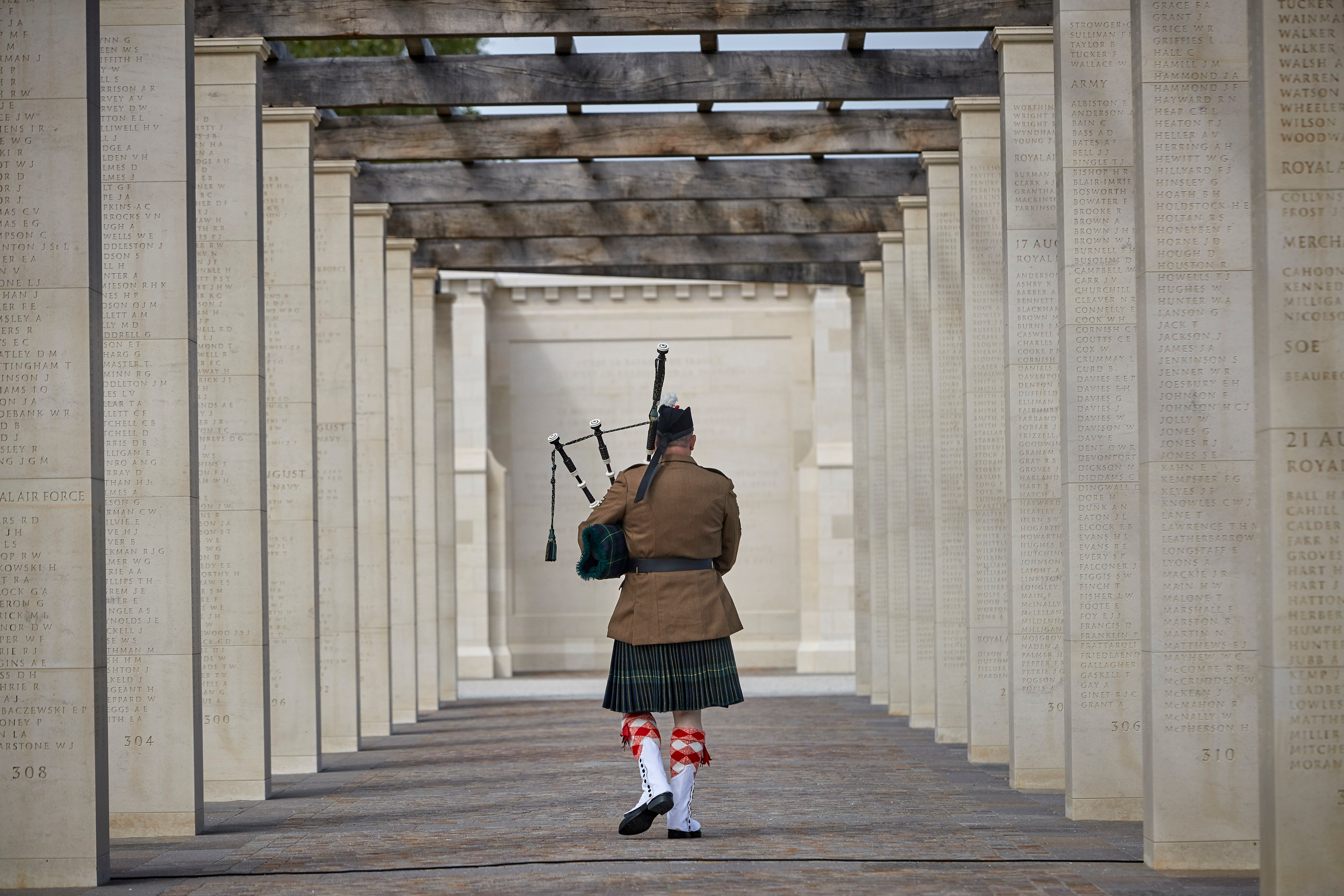
Thanks to the wonders of technology, not all was lost. The proceedings from Normandy were relayed to the National Memorial Arboretum in Staffordshire, where more than 100 veterans had gathered to take part, and Prince Charles, as patron of the trust, was able to deliver his speech remotely. But, of course, this was nothing like being there, for an occasion that will remain in so many ways unique. After all, it is highly unusual for such a major national memorial to be commissioned so long after the conflict that it is only just within the living memory of those who fought it. Not only that, but for it to be sited on foreign soil.
The immediate origins of the project can be traced to 2015. According to the trust, this is when George Batts, the former national secretary of the Normandy Veterans Association (NVA) – which had recently been disbanded because of falling membership – had a meeting with the BBC journalist, Nicholas Witchell, and spoke about his hope that there might one day be a memorial. According to Lord Ricketts, it was an idea that had been current among veterans for a long time, but had never gotten off the ground. Witchell took the vital step of setting up the Normandy Memorial Trust and asking for government support.
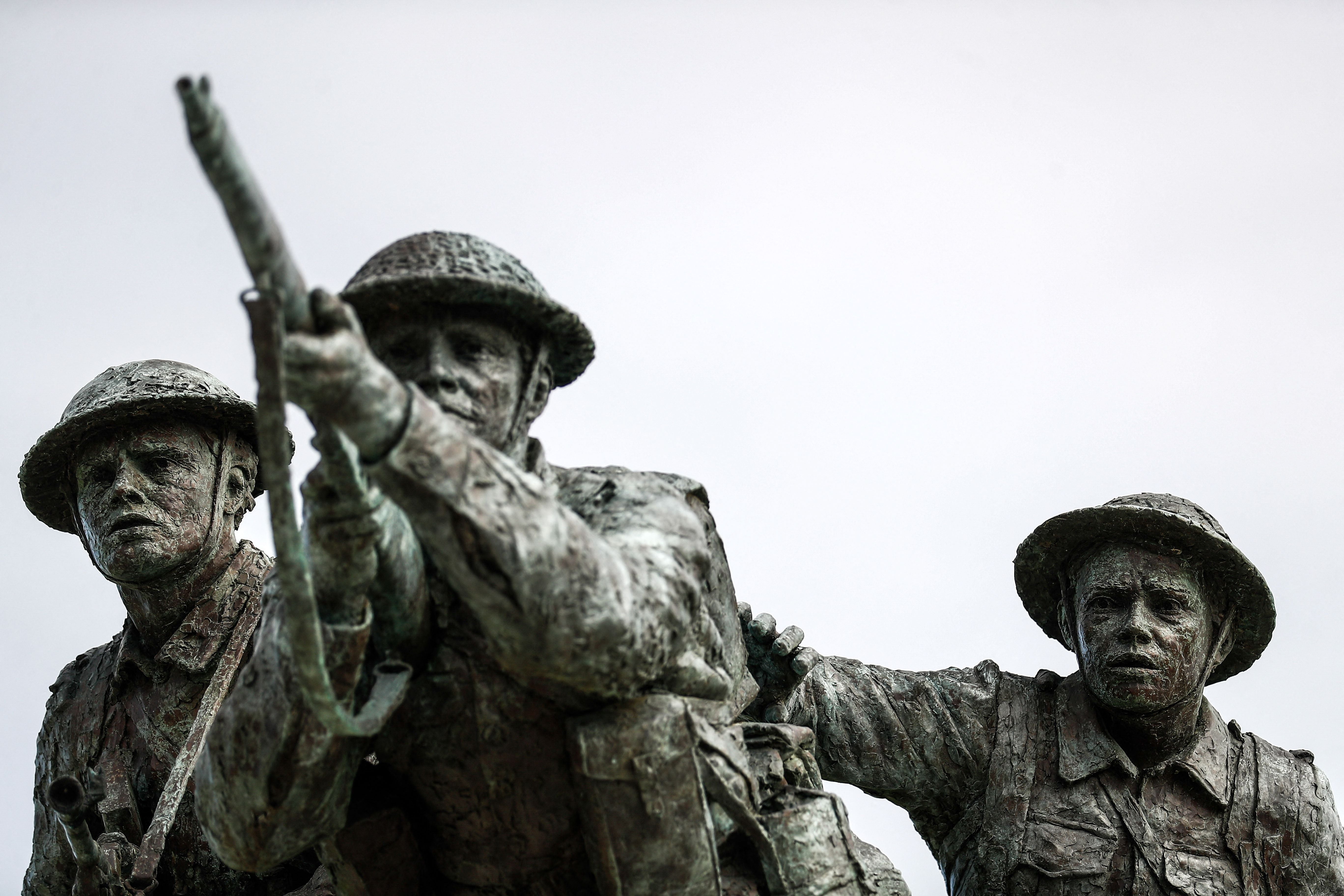
However, he may well have been knocking at a door that was at least half-open. Not so many months before, heads of state and government, representing the wartime Allies, assembled in Normandy to commemorate the 70th anniversary of the D-Day landings. The gathering was planned as the last such grand commemoration, and the dignitaries were led by the Queen and President Francois Hollande of France. The veterans held their last march-past on Gold Beach – one of two beaches where the British forces landed – and Batts received an award for his work for the NVA from the then UK prime minister, David Cameron.
Whether as a result of that meeting or through Witchell’s support after his meeting with Batts, Cameron took an interest, and so did his successor, Theresa May, and in 2017 it was announced that the government was to provide £20m for the memorial. In a nice touch, it was made clear that this was part of the money raised from the fines levied on the big banks following the Libor rate-fixing scandal. The remaining £10m was to be raised from private donations. The date set for the unveiling of the completed memorial was 6 June 2019 – the 75th anniversary of D-Day.
From then on, things moved extraordinarily fast for such a major project. An architect, Liam O’Connor, who designed the British Armed Forces Memorial in Staffordshire, and sculptor, David Williams-Ellis, were commissioned and suitable land was identified and bought. It was farmland, Ricketts told me, but farmland not so good that the owners were not prepared to part with it.
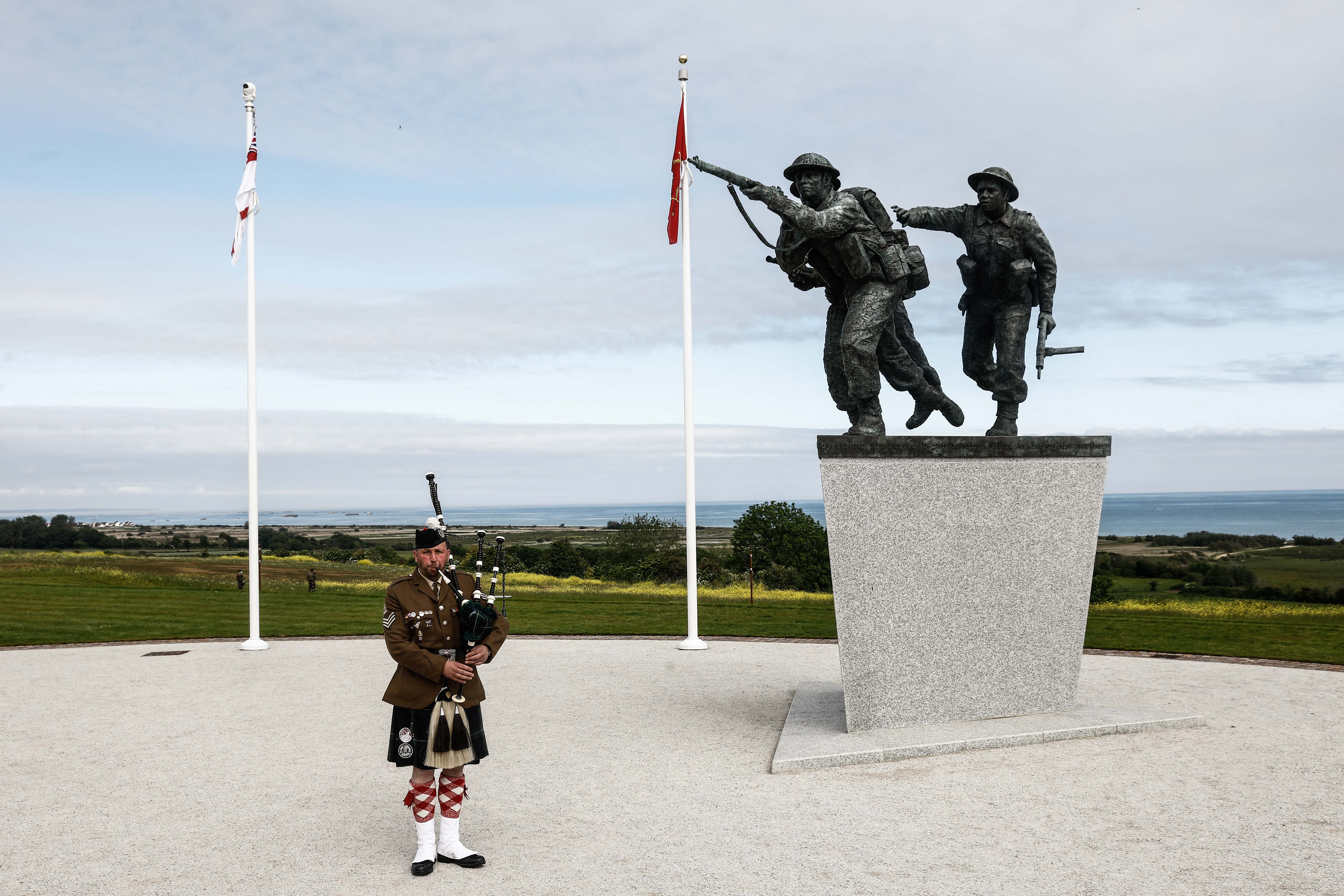
Any opposition, it appears, came from local residents concerned not about a sudden new reminder of a past they might have wanted to leave behind – or even about the lost land – but from concerns about numbers of tourists and commerce changing the character of their surroundings. Against that, were those who argued that more visitors and more business could improve life for local communities and noted that, without any place on the Normandy beaches tourist map to call their own, they had lost out on opportunities available to those who were.
The site, near the village of Ver-sur-Mer, affords a panoramic view down to Gold Beach, and further – on a clear day – to Arromanches, where the British had built an artificial port that was critical in facilitating the landing of hardware and supplies. The building of the memorial, more than 70 years on, was a cooperative effort.
The main construction company was French, and the stone used for the 160 pillars that constitute the main part of the memorial was also French – although shipped to Northern Ireland, where it was inscribed, and transported back again. The whole has been described as a “temple-like structure”, with a wall where the names of those killed on D-Day are inscribed. Williams-Ellis’s bronze sculpture of three charging infantrymen looks out to sea.
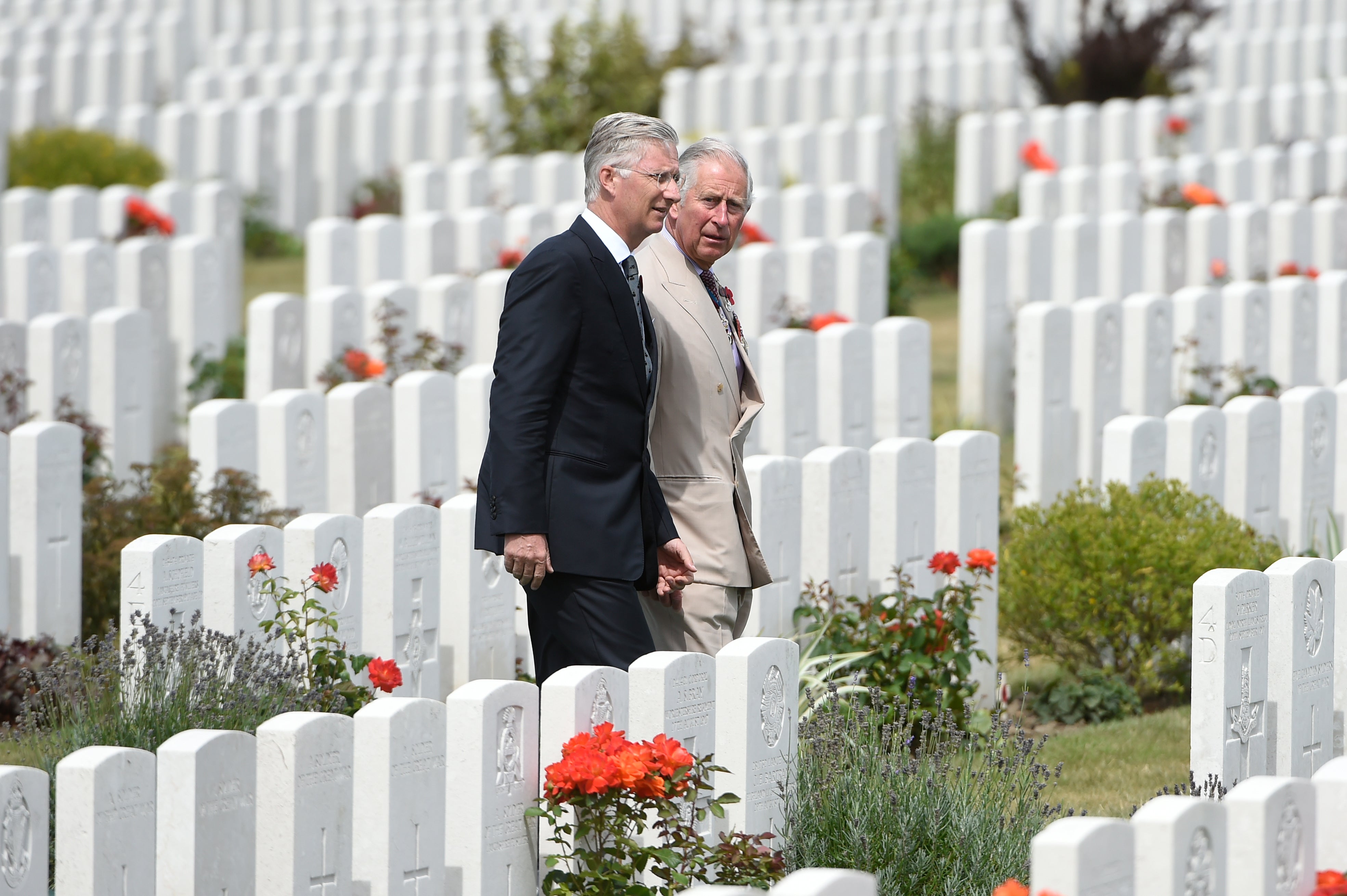
Some of the most time-consuming work was not the actual building, but the collecting of the names to be memorialised. In the end, there were 22,442, painstakingly gathered and checked by professional researchers from war cemeteries, regimental records and appeals to families through veterans’ associations. As well as those who served in the British armed forces and merchant navy are the names of those from more than 20 other countries who served alongside them, sailors or airmen who were lost at sea, and those who died from their wounds after being repatriated to the UK. A section also commemorates French civilians who died in the fighting as the Allies advanced.
The ambitious timetable for completion was not quite met. The ceremony planned for 2019, with Theresa May and French President Emmanuel Macron in attendance, actually marked the laying of the foundation stone. Some delay was caused by the pandemic, but the memorial was nonetheless finished in the autumn of 2020, in good time for this year’s official opening. With veterans of the campaign becoming ever fewer, time was of the essence.
But why, you might ask, had it taken so long to commemorate what is, after all, such an epoch-making chapter of the war from the British point of view? Or perhaps, why was a memorial thought necessary at all, given the Commonwealth war cemeteries dotted over the whole region, with the biggest and most frequented barely a dozen miles away at Bayeux?
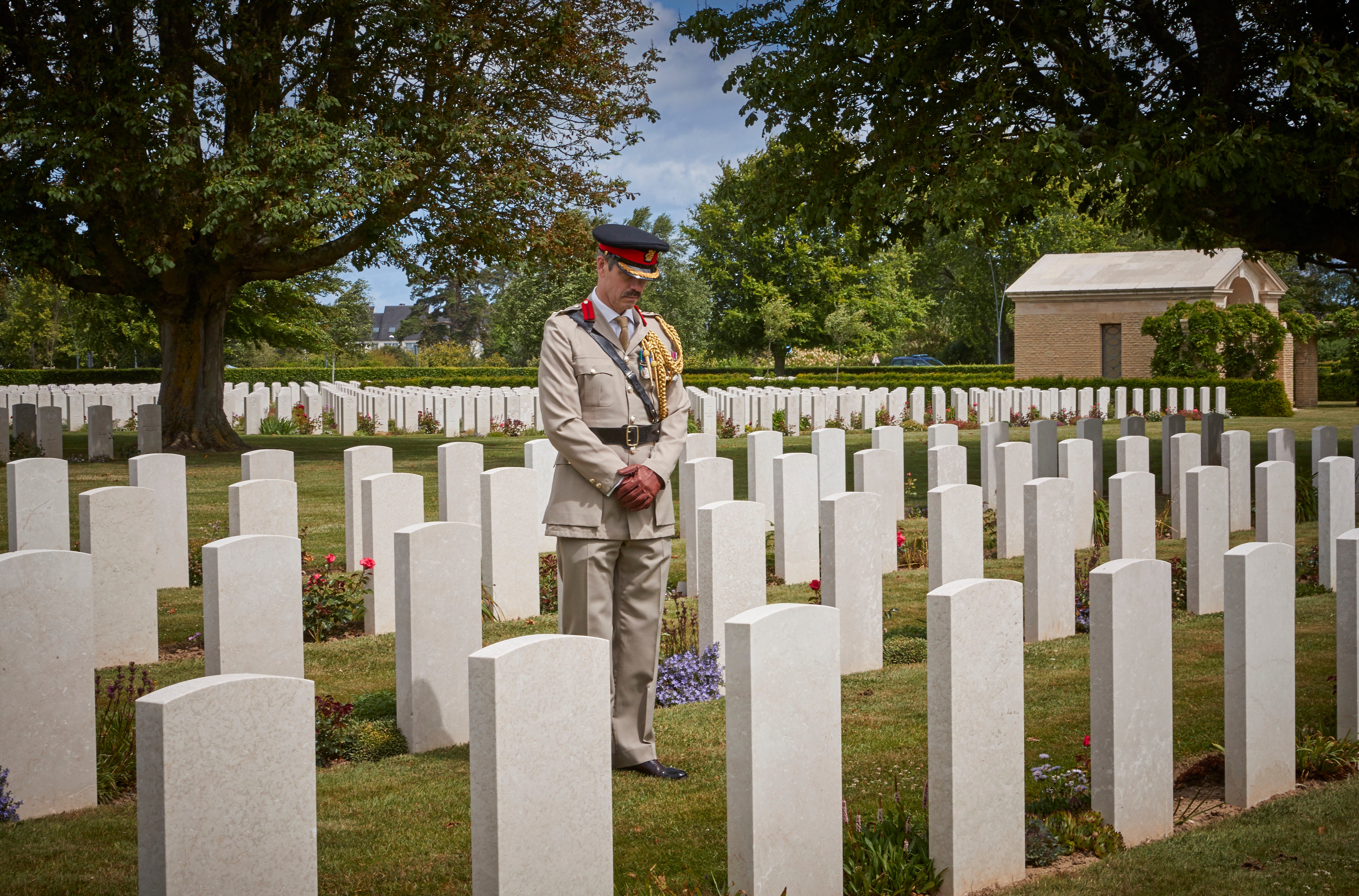
Interestingly, the answers to those two questions are connected. For many veterans, and this is a view that seems to have grown over the years, the war cemeteries were in some respects incomplete. While admirable in many ways – their meticulous record-keeping, their evocative and often simply beautiful locations, the elegant consistency of their design and their impeccable maintenance – there were those who were simply never found, not just airmen and sailors who were shot down or died at sea, but those who went missing, and therefore were never buried. There were also people who were not soldiers, but somehow caught up in the war, including civilians on the ground. Should their memory not be kept in some way?
Veterans also pointed to the United States and Canada, the other two countries whose troops were engaged in Allied operations at Normandy, which both had national memorials of their own. Why was there not one for those who had served, and died, under British command? This appears to have been one of the arguments made by Batts when he met Witchell, and the argument that clinched Cameron’s support.
But the other answer relates more than anything to a shift in public opinion.
The British – although not just the British – tradition was to bury those killed where they fell. This may have been in part practical: the scale of the casualties and obvious logistical difficulties of transporting bodies home either during or immediately after a conflict and the distances involved in conflicts such as the Crimean war, the Boer war or the Gallipoli campaign.
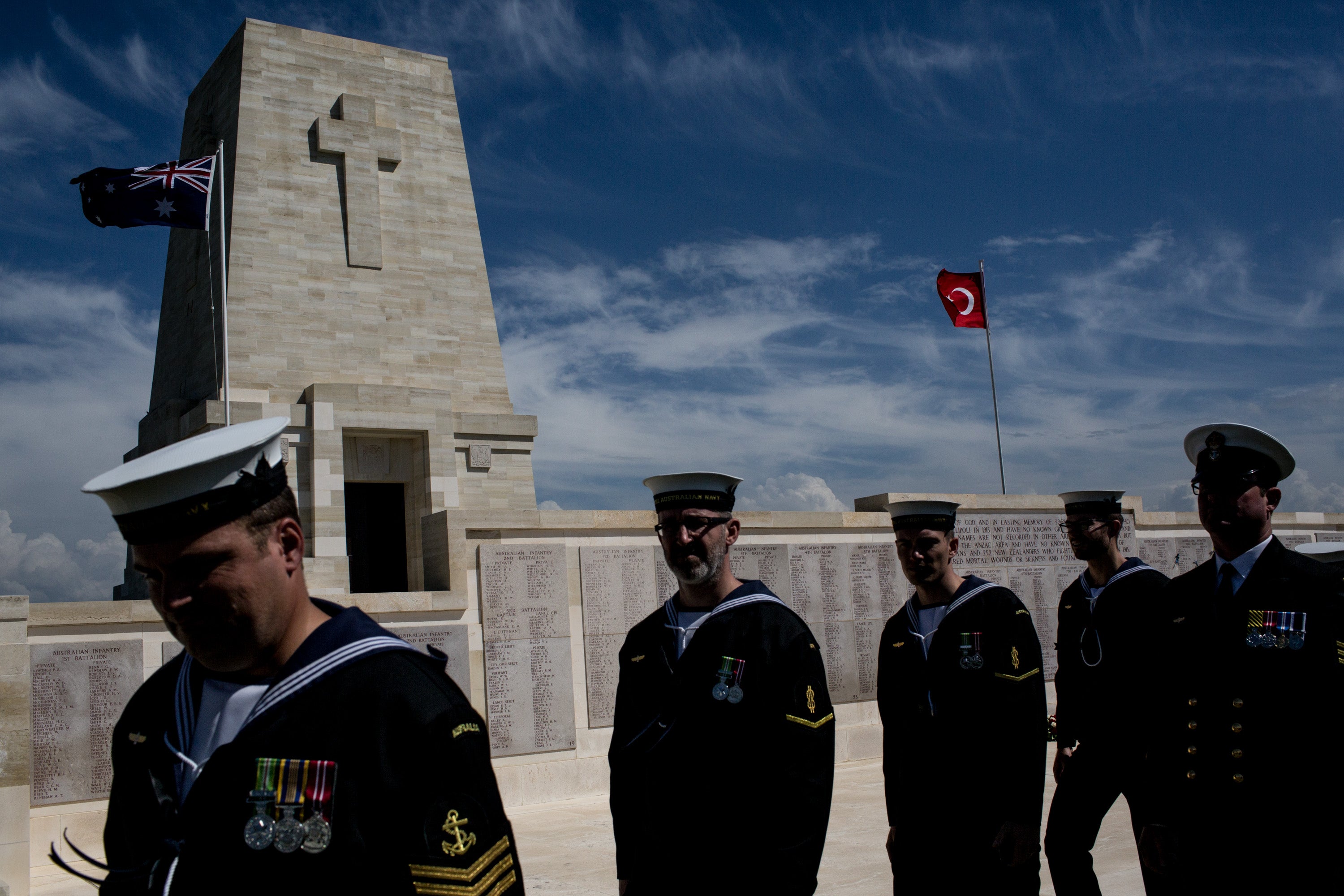
But it also seemed to reflect a shared sense that this was the appropriate thing to do. The “corner of a foreign field/That is forever England...”, immortalised in Rupert Brooke’s First World War poem, is the perfect expression of that sentiment. And this was the usual practice, for British troops who died in action, right up until the Falklands War in 1982.
Memorials were built at home. Crimean and First World War monuments are to be found in practically every UK town and city while the fallen were buried as close as was practicable to where they fell, and, in time, in the war cemeteries built for that purpose. The Cenotaph in Whitehall, which is the centre of official Armistice Day celebrations every year on Remembrance Sunday, commemorates “The glorious dead”. In the same year, 1920, that the memorial was built, the body of an “unknown warrior” was placed in a special tomb in Westminster Abbey, at the same time a French “unknown warrior” was also interred at the Arc de Triomphe. The idea was that one, unknown, soldier could stand for all the others.
The tradition remained pretty much intact until after the Falklands War, where 255 British military service personnel died. Initially, British casualties were buried at Blue Beach Military Cemetery at San Carlos, near to where the first British troops landed in their campaign to recover the islands from the Argentines. Soon after the war, however, one family requested that their son’s body be repatriated. Other families joined, and the requests grew into a campaign that commanded wide public support.
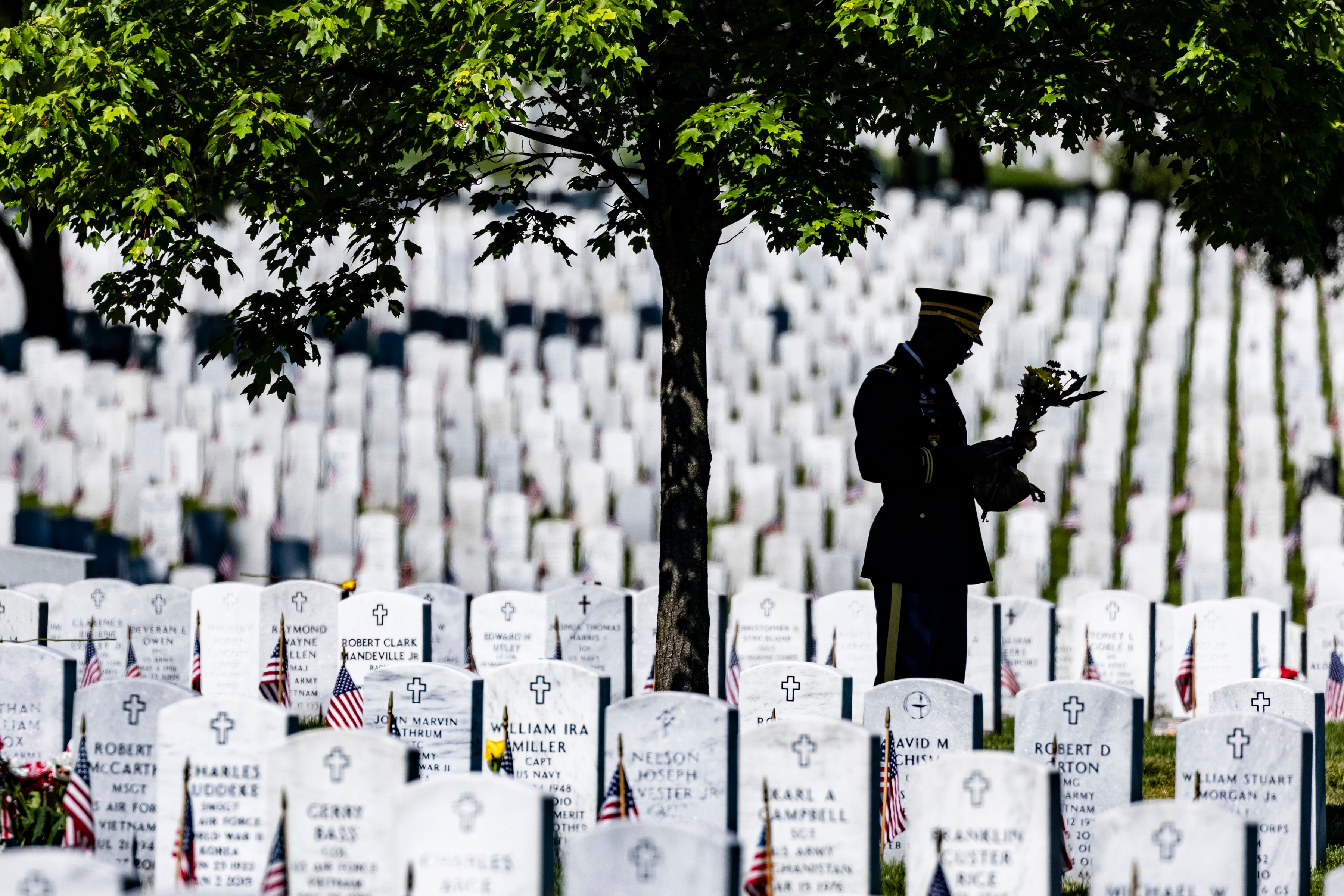
The result was that the government agreed to bring back all those whose families so requested, and now only 13 remain at the St Carlos cemetery. Another two are buried at isolated graves in the islands. Among those interred at St Carlos is Lt-Colonel H Jones, who was awarded the Victoria Cross for leading the assault on Goose Green.
The change in practice is something that has been made possible, in part, by modern transport facilities, but also because the casualties of modern wars – at least those fought by advanced industrialised countries – are far fewer than they were in the two world wars or the Korean war. The first Gulf war (1990-91) cost 47 British lives, the Iraq war (2003-09) claimed 222, and the long conflict in Afghanistan (2001- 2015) 455. Those with serious injuries and continuing mental health damage account for many more.
This shift may also owe something to practice in the US, where the norm changed after the Korean war – from the remains of those who were killed being buried in military cemeteries near to the field of conflict, to being repatriated with military honours. More than 47,000 Americans are estimated to have been killed during the Vietnam war (1964-1975), with most being brought back to the US.
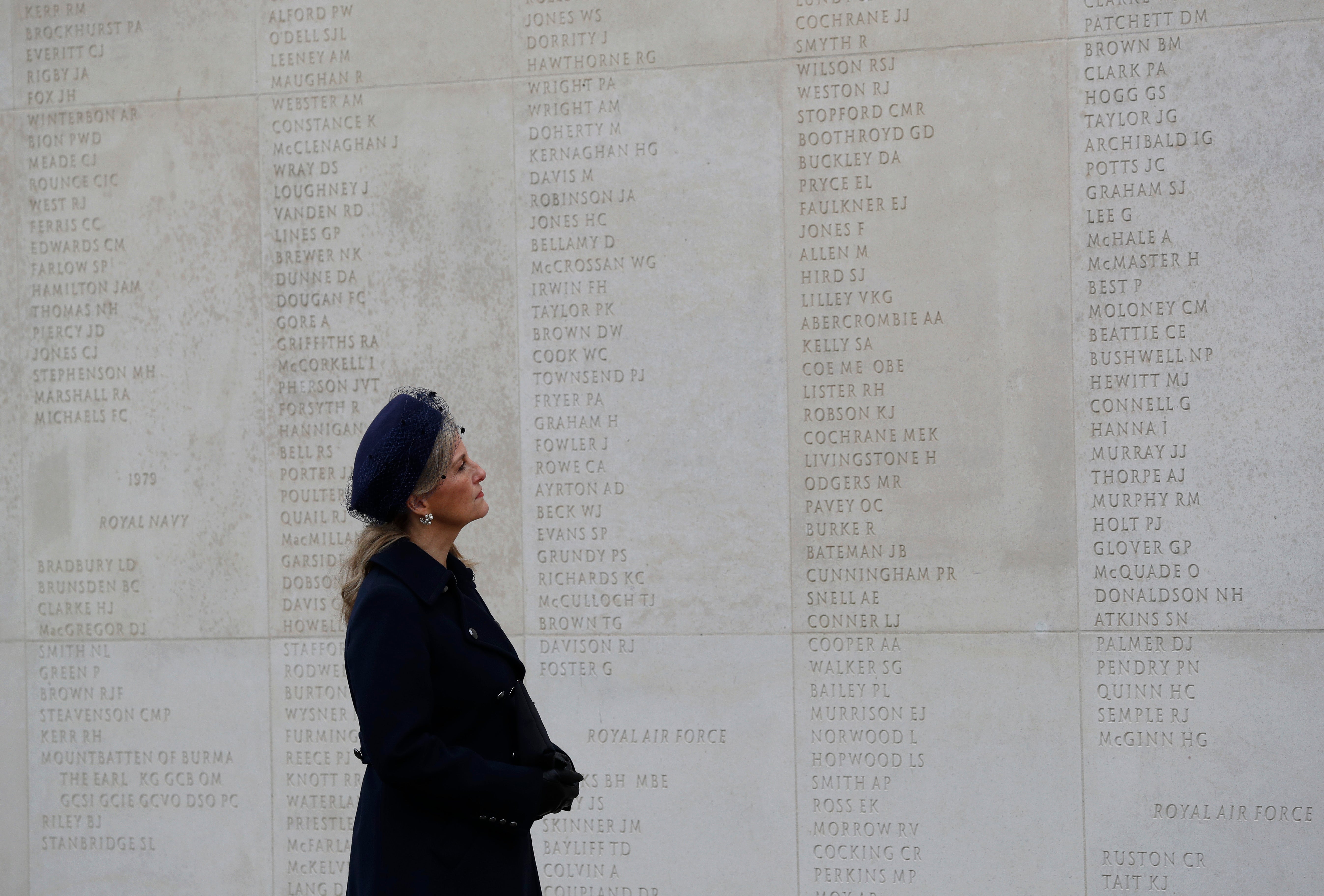
This suggests that personal graves back at home, and memorials – rather than dedicated war cemeteries abroad – will be the way in which those killed in foreign conflicts will be commemorated from now on. The National Memorial Arboretum was opened near Lichfield only in 2001 – with the Remembrance Centre following in 2017, the same year as a new monument to the service personnel and civilians killed in Iraq and Afghanistan was set up in London close to the Ministry of Defence.
The British Normandy Memorial can be seen somehow as spanning the two practices. It also brings the UK more into line with some continental countries, where the distinction between national memorials and war cemeteries is less sharply delineated than it is here. A classic example would be the Donaument Ossuary at Verdun, which is where President Mitterrand and Chancellor Kohl memorably joined hands during a visit symbolising Franco-German reconciliation in 1984, for the 70th anniversary of the First World War.
The repatriation of war dead, however, while a consolation to many bereaved families, can turn problematical for governments. When a foreign engagement is, or becomes, politically unpopular, the sight of coffins being repatriated can be calculated to fuel hostility still further. Attempts to hush up the return of casualties risk even more public opprobrium if and when they are found out. This is true even in countries such as the former Soviet Union and Russia, which are hardly associated with official transparency.
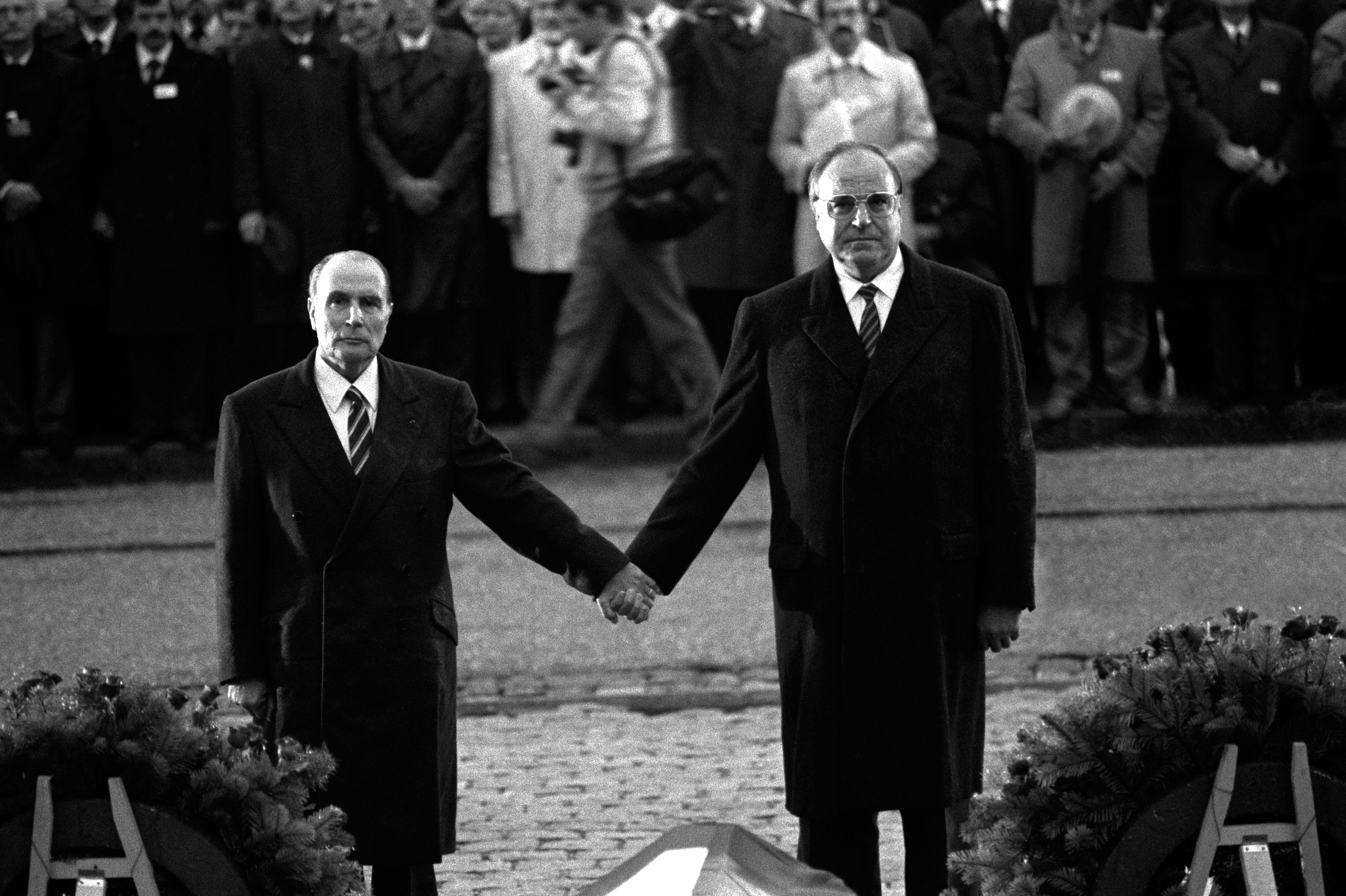
The return of casualties from the 10-year Soviet intervention in Afghanistan – described by Mikhail Gorbachev as a “bleeding wound” when he announced its end in 1989 – had spawned protests by soldiers’ mothers, who formed themselves into a highly effective campaign group. Their protests, which were both against the war itself and the treatment of Soviet servicemen, who were repatriated in unmarked coffins, started an anti-war movement which continues to this day and is one reason why Russia has been reticent about its military involvement in south-eastern Ukraine and why its engagement in Syria remained cautious and limited mainly to air cover.
Back in the UK, some of the liabilities of repatriating the war dead were graphically illustrated during the Iraq conflict, when casualties were returned to RAF Lineham, and their passage through the small Wiltshire town of Wootton Bassett on the way to the John Ratcliffe Hospital in Oxford offered an opportunity for public mourning – and protest, both against the war and against a feeling that the dead were not being appropriately honoured.
Day after day, news of a new repatriation flight brought local people on to the high street with wreathes and flags to pay homage to the dead. Hundreds, sometimes thousands, of people came out. In the end, these massive, and often highly emotional displays, divided public opinion, with some condemning the scenes as mawkish and excessive. The flights ceased in the autumn of 2011, when they returned to RAF Brize Norton, and the Queen designated the town Royal Wootton Bassett in recognition of what was seen as its patriotism.
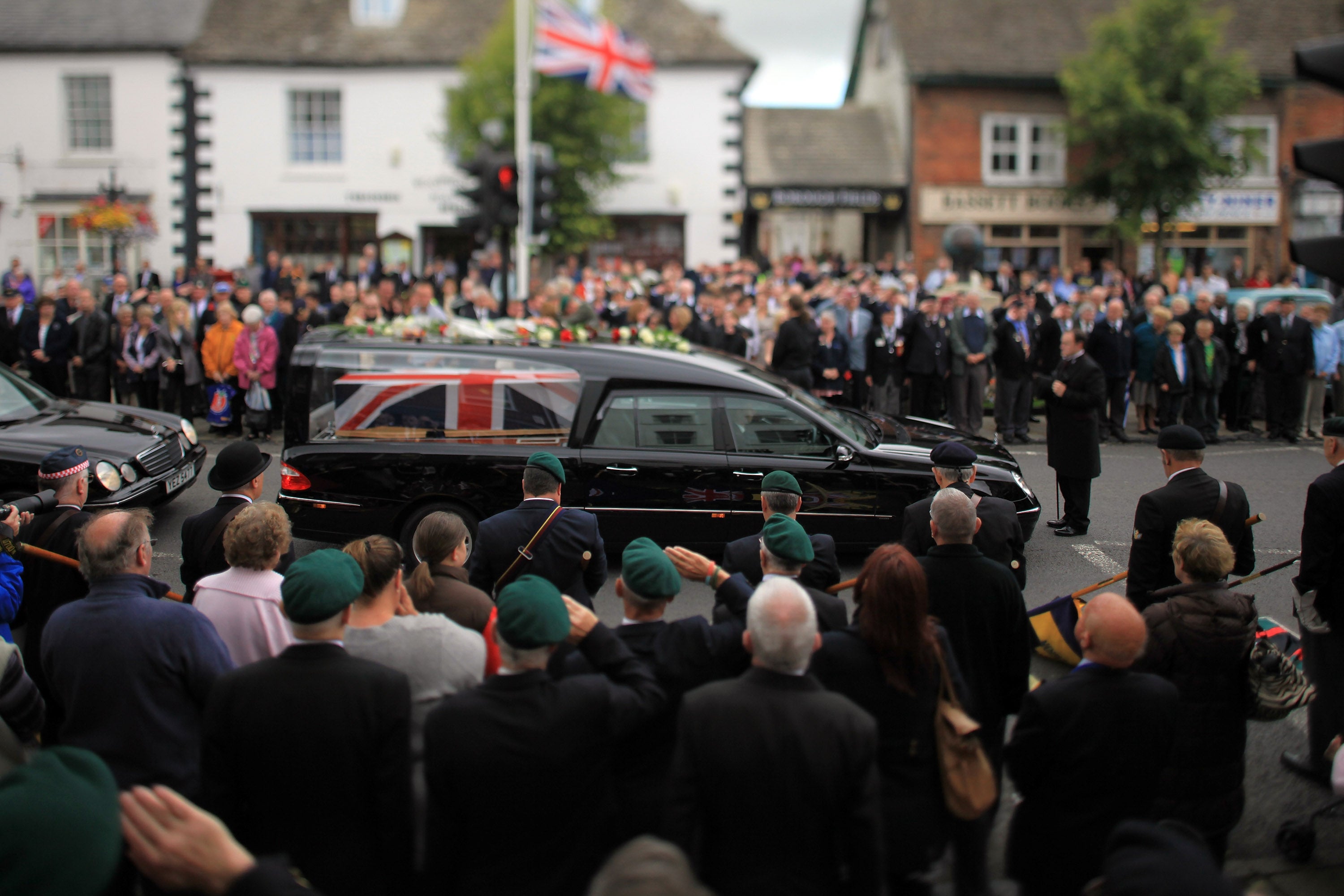
If the British Normandy Memorial represents a felicitous compromise between, on the one hand, commemorating the casualties of war in or near the place of conflict and meeting the demands of families today to bring their sons and daughters home, it faces two potential, and related, challenges. The first is to remain relevant, so long after the events it immortalises.
Will the next generation of schoolchildren still be visiting even Second World War cemeteries and memorials across the Channel, and the generation after that? And how much appetite will there be, as the living memory of war disappears, leaving an afterglow of victory alone, to register the full import of the fact that this victory was bought, in part, by the more than 20,000 who lost their lives in the fighting for northern France.
The Normandy Memorial has what is now the pre-requisite of such sites: an app designed to provide further information and bring the dead stones to life. Where possible, names have been personalised, with details of family, and snippets and readings from letters home. There are plans, too, and land already earmarked on the site, to build a centre where the history and background can be explained.
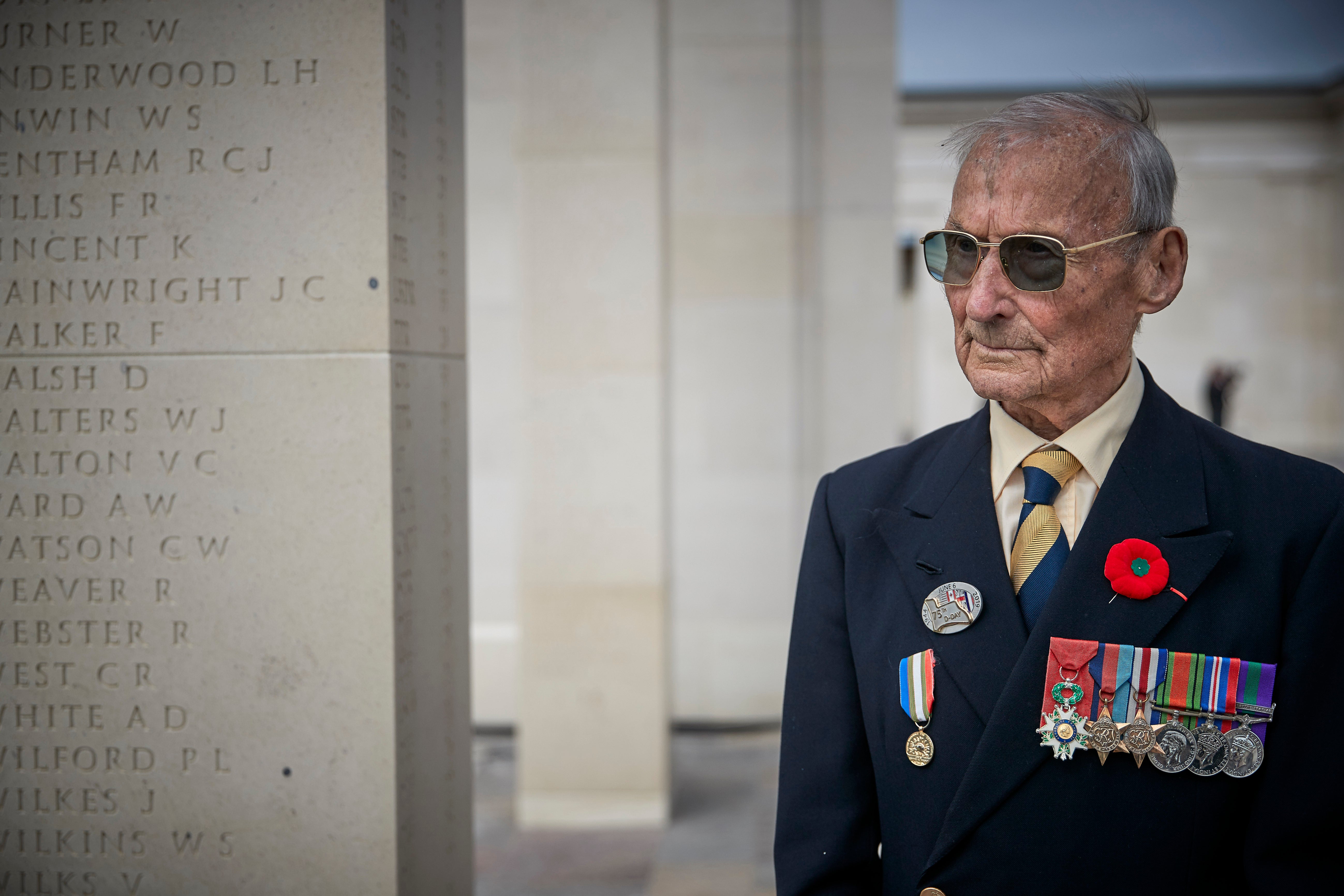
Which leads on to the second challenge: money. The plan for a learning centre is one thing and it is not yet funded. The upkeep of the new memorial is another, and here it seems there were amicable, if somewhat careful, discussions with the Commonwealth War Graves Commission about the arrangements. The Normandy Memorial is not a cemetery and does not come under the commission. For the time being, it has entered into a contract for the commission’s services.
But this will not last forever, and the question then arises whether there will then be sufficient public support to raise funds for the continued upkeep, or whether, in future, the government of the day would be prepared to step in. It might, given the memorial’s designation as the British Normandy Memorial; but then again, when money is tight, history, culture and things that are abroad can be among the first to go.
Nor will the UK’s departure from the European Union make visits or fundraising any easier. Only days ago, news came that the British Legion, a highly successful and professional charity, will no longer sell poppies and other merchandise on the other side of the Channel, because of the paperwork and customs duties that are now required. This may yet change but unless it does, the UK and the countries that its armed forces fought mile by mile across Europe to liberate may be destined to move ever further apart.
Join our commenting forum
Join thought-provoking conversations, follow other Independent readers and see their replies
Comments
Bookmark popover
Removed from bookmarks